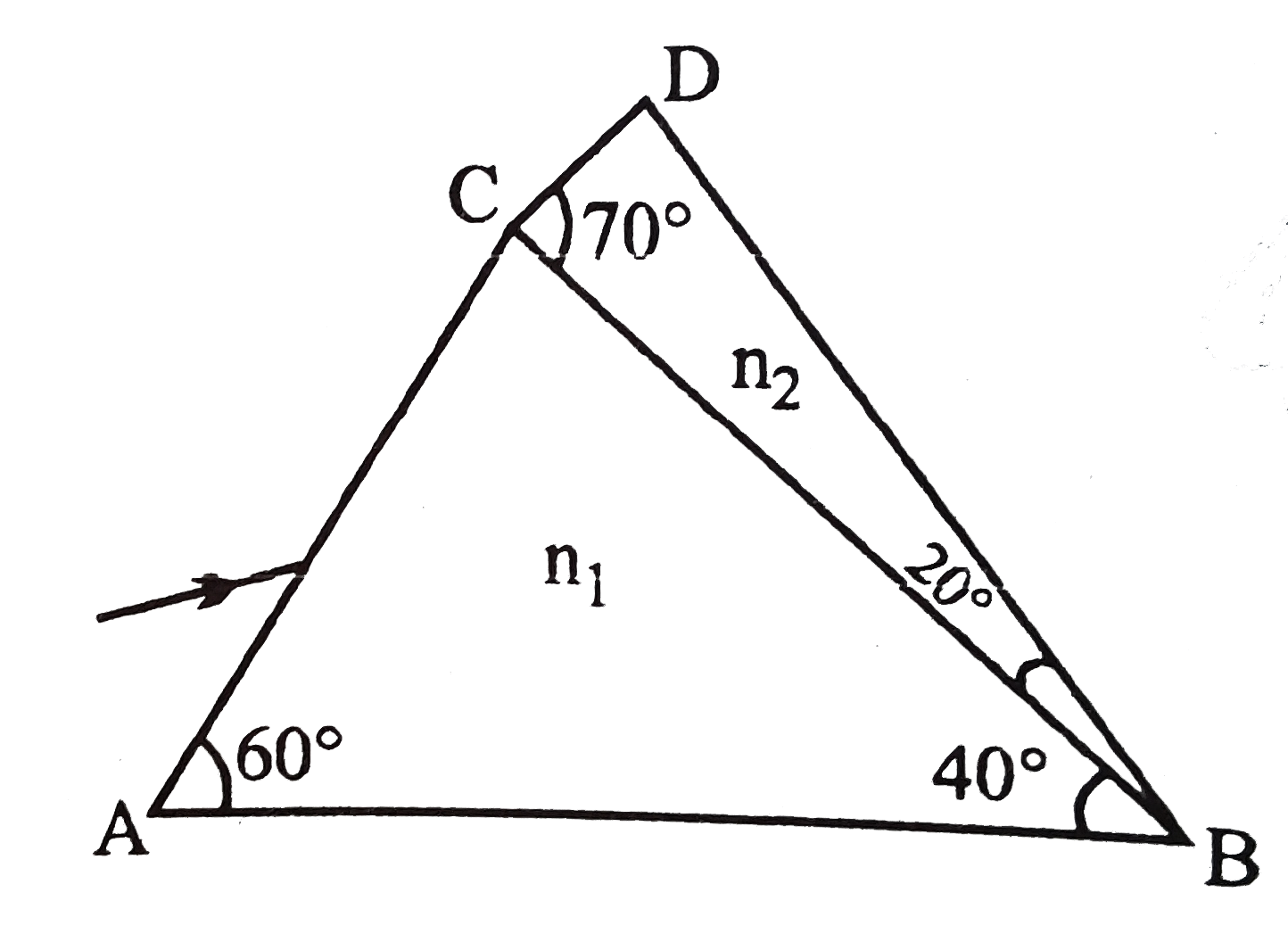Gravitational potential difference between a point on surface of planet and another point 10 m above is 4J/kg. Considering gravitational field to be uniform, how much work is done in moving a mass of 2kg from the surface to a point 5 m above the surface?Solution in Gujrati
4J
5J
6J
7J
The correct Answer is:A
Gravitational field g=−ΔVΔx=−(−410)=410J/kg m
Work done in moving a mass of 2kg from the surface to a point 5m above the surface
W=mgh=(2kg)(410Jkgm)(5m)=4J
Topper's Solved these Questions
- GRAVITATIONBOOK - ALLEN CHAPTER - GRAVITATIONEXERCISE - Exercise 1 (Check your Grasp)
28 Videos
- GRAVITATIONBOOK - ALLEN CHAPTER - GRAVITATIONEXERCISE - Exercise 2 (Brain Teasers)
27 Videos
- GEOMETRICAL OPTICSBOOK - ALLEN CHAPTER - GEOMETRICAL OPTICSEXERCISE - subjective
14 Videos
- KINEMATICS-2DBOOK - ALLEN CHAPTER - KINEMATICS-2DEXERCISE - Exercise (O-2)
47 Videos
Similar Questions
Three identical point mass each of mass 1kg lie in the x-y plane at point (0,0), (0,0.2m) and (0.2m, 0). The net gravitational force on the mass at the origin is
View SolutionOne projectile after deviating from its path starts moving round the earth in a circular path of radius equal to nine times the radius of earth R. Its time period is
View SolutionA prism of refractive index n1 & another prism of reactive index n2 are stuck together without a gap as shown in the figure.The angle of the prisms are as shown. n1&n2depend onλ,the wavelength of light according to n1=1.20+10.8×104λ2&n2=1.45+1.80×104λ2 where λ is in nm.

(i)Calculate the wavelength λ0for which rays incident at any angle on the interfaceBCpass through without bending at that interface.
(ii) for light of wavelength λ0,find the angle of incidencei on faceACsuch that the deviation produced by the combination of prism is minimum.
View SolutionA particle is moving in xy-plane .At certain instant the components of its velocity and acceleration are as follows ux=3m/s,uy=4m/s,ax=2m/s2anday=1m/s2. The rate of change of speed at this moment is
View SolutionThe gravitational potential difference between the surface of a planet and a point 20 m above it is 16 J//kg . Calculate the work done in moving a 4 kg body by 8m on a slope of 60^@ from the horizontal.
View SolutionGravitational potential difference between surface of a planet and a point situated at a height of 20 m above its surface is 2joule/kg. if gravitational field is uniform, then the work done in taking a 5kg body of height 4 meter above surface will be-:
View Solutionगुरुत्वीय विभव से क्या तात्पर्य है? पृथ्वी-तल से h ऊँचाई पर किसी बिन्दु पर गुरुत्वीय विभव का सूत्र निगमित कीजिए।
View SolutionGive the expression for the gravitation potential at a point 'h' above the surface of the Earth.
View Solutionगुरुत्वीय विभव को परिभाषित कीजिए। M द्रव्यमान तथा R त्रिज्या के ठोस गोले के कारण उसके बाहर पृष्ठ पर व अन्दर स्थित बिन्दुओं पर गुरुत्वीय विभव के सूत्रों को व्युत्पन्न कीजिए।
View SolutionThe gravitational potential difference between the surface of a planet and a point 20 m above it is 16 J kg^(-1) . The work done in moving a 4 kg body by 8 m on a slope of 60^(@) from the horizontal is
View SolutionWhat will be the gravitational potential on the surface of a planet of mass M and radius R ?
View SolutionThe work done by gravitational force on a point mass m0in moving from the surface of a planet off mass M and radius R to a height R2 is
View SolutionAt a point above the surface of earth, the gravitational potential is -5.12xx10^7Jkg^-1 and accelaration due to gravity, is 6.4ms^-2 . Calculate the height of the point above earth's surface.
View SolutionThe gravitational potential difference between the surface of a planet and a point 20m above it is 16J/kg. Calculate the work done in moving a 4kg body by 8m on a slope of 60∘ from the horizontal.
View SolutionThe work done by gravitational force on a point mass m0in moving from the surface of a planet off mass M and radius R to a height R2 is
View SolutionWhat is gravitational potential energy at a point? How much of work is done in shifting mass from the surface to a height equal to its radius?
View Solution
